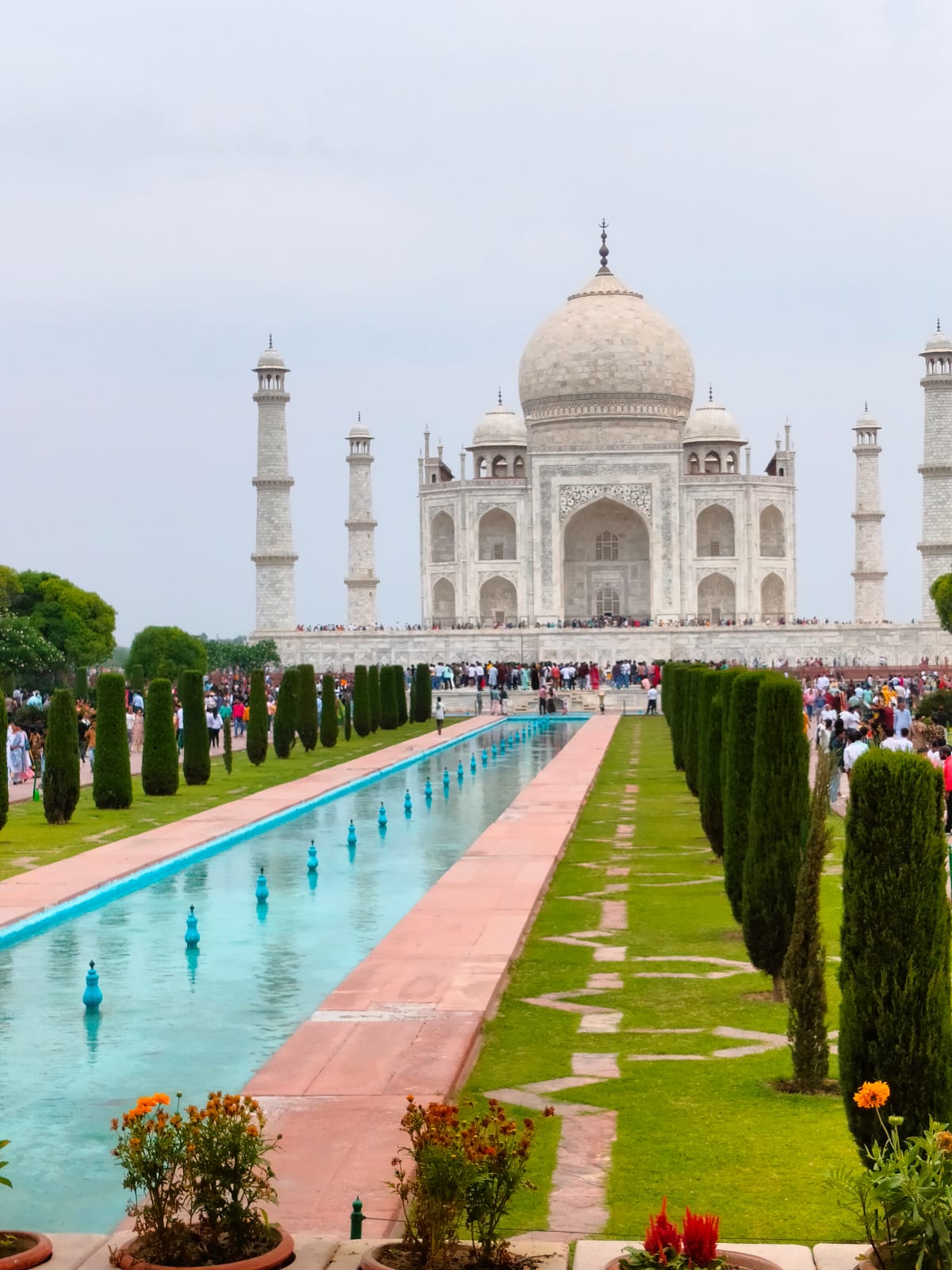Feature by Drishti Baheti
The Taj Mahal is an ivory-white marble mausoleum situated in Agra, India which stands as an eternal symbol of love, beauty, and architectural brilliance. It was commissioned in 1632 by the Mughal Emperor Shah Jahan.
It was built in memory of his wife Mumtaz Mahal who died during childbirth.
This structure, recognized as one of the New Seven Wonders of the World, attracts millions of people throughout the year leaving them in awe of its beauty.
“Taj Mahal,” translates to “Crown of Palaces” in Persian.
Its Architecture:

The Taj Mahal’s architecture was designed by Ustad Ahmad Lahauri. It is a blend of Persian, Islamic, and Indian architectural styles.
The Taj Mahal complex covers 17 Hectares.
The complex includes:
-The Tomb
-A mosque
-A guest house
-Formal Gardens
-A crenellated wall
The main structure is built on a 22 feet high and 313-square-foot platform. It consists of a central dome surrounded by four minarets – each about 137 feet high.
The central dome is 240 feet (73m) tall. The minarets are built at a tilted angle so that if they were to fall, they would fall away from the building, protecting the tomb. The central tomb is topped with a gilded finial (a small decorative piece placed on the top of a dome to emphasise the apex), which was made with gold but was replaced with a copy made of bronze. The original finale was stolen by the British.
The Taj Mahal’s symmetry is striking, with its reflection mirrored in the Yamuna River, which enhances its beauty. The mausoleum houses the tombs of Shah Jahan and Mumtaz Mahal, intricately designed with delicate marble latticework (jali) and intricate calligraphy. The surrounding gardens, with their geometric layout and flowing water channels, add to the monument’s charm.
Its Cultural Significance
The mosque located within the Taj Mahal complex is a place of worship. It is made of red sandstone and white marble, just like the main Taj Mahal structure. This mosque was built by Shah Jahan for religious purposes. Visitors can admire its graceful architecture and tranquil atmosphere.

The Tomb
The tomb which we can see inside the Taj Mahal is not the original burial place of Mumtaz Mahal. The real tomb, containing the mortal remains of Mumtaz Mahal, is located below the visible false tomb, at a lower level. The upper chamber, which visitors can view, is a cenotaph, a symbolic monument built in honour of Mumtaz Mahal. The actual gravesite is not accessible to the public and is situated in a quiet chamber beneath the ornate marble floor. The Tomb was originally made only for Mumtaz Mahal but due to the sudden death of Shah Jahan, his body was also buried with his wife.
The Taj Mahal is a UNESCO World Heritage Site. The complex surrounding the Taj Mahal provides visitors with a glimpse into the opulence of the Mughal era.
Images taken by Drishti Baheti

